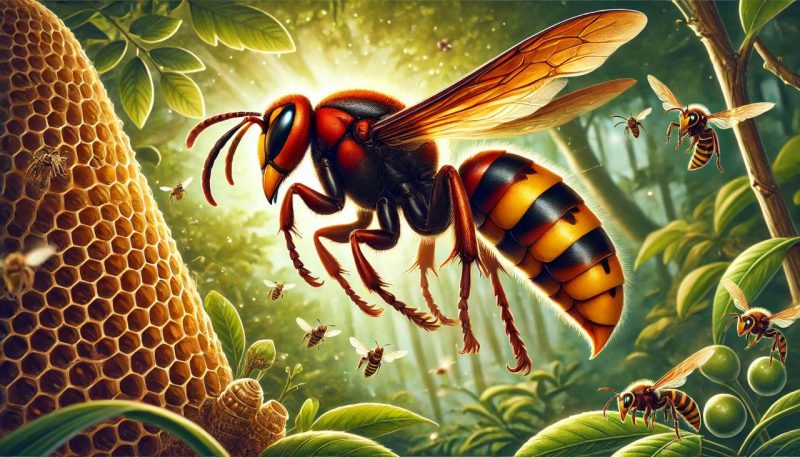A New Predator Enters Europe
For the first time, the invasive southern giant hornet (Vespa soror) has been detected in Europe, marking a critical moment in the fight against invasive species. Discovered in northern Spain in November 2024, this tropical Asian species joins its relative, the Asian hornet (Vespa velutina), in threatening local ecosystems and agriculture.

The discovery of four individual Vespa soror hornets has prompted immediate action from environmental authorities, who are racing to locate and eradicate nests before the species establishes itself on the continent.
The Growing Impact of Invasive Hornets
Europe has been battling Vespa velutina since its accidental introduction to France in 2004. Over the years, it has spread to numerous countries, preying on honeybees and other critical pollinators. Its presence has already disrupted biodiversity, reduced honey production, and raised agricultural concerns.
Now, the introduction of the more aggressive Vespa soror raises the stakes even higher. Known for its potent sting and formidable hunting capabilities, this hornet is a significant threat to native insects and human safety alike.
Why These Hornets Are a Concern
- Impact on Pollinators: Both Vespa velutina and Vespa soror target honeybees, essential for pollination in agricultural and natural ecosystems. The loss of pollinators could severely affect crop yields and biodiversity.
- Ecological Disruption: These invasive species outcompete native insects, creating imbalances in the food chain.
- Human Safety Risks: Though generally non-aggressive, these hornets can become dangerous when their nests are disturbed. Their venom is particularly potent, and multiple stings can lead to severe health complications or fatalities.
How Authorities Are Responding
Environmental agencies across Europe are stepping up surveillance and containment efforts to manage the threat. In Spain, authorities are using advanced detection technologies, such as thermal imaging and radio tagging, to locate and destroy nests. Similar efforts have been ramped up in the UK, where Vespa velutina has been spreading rapidly.
What You Can Do
Public vigilance is crucial in combating this invasion. Here’s how you can help:
- Recognize the Threat:
- Vespa soror: Larger than most hornets, with a dark brown body, orange-yellow head, and yellow-tipped legs.
- Vespa velutina: Slightly smaller, with a dark thorax and a yellow-orange banded abdomen.
- Report Sightings: Use reporting tools like the Asian Hornet Watch app (available in the UK) or contact local environmental agencies.
- Stay Safe: Avoid approaching nests or provoking hornets. If stung, clean the wound and seek medical attention for severe reactions.
The Road Ahead
The battle against invasive hornets requires international cooperation and swift action. Containment efforts in Europe are a race against time to prevent these species from becoming a permanent fixture in the ecosystem. Public awareness, combined with scientific innovation, will be key to preserving biodiversity and protecting agricultural industries.
As Vespa soror makes its unwelcome debut in Europe, the message is clear: vigilance, action, and collaboration are essential to stop the spread of these dangerous predators.
